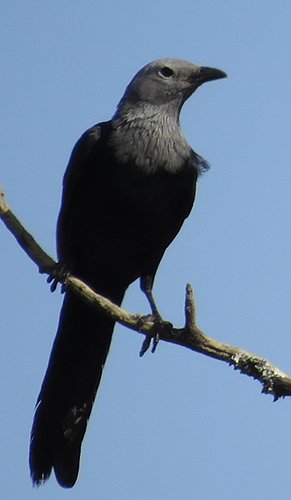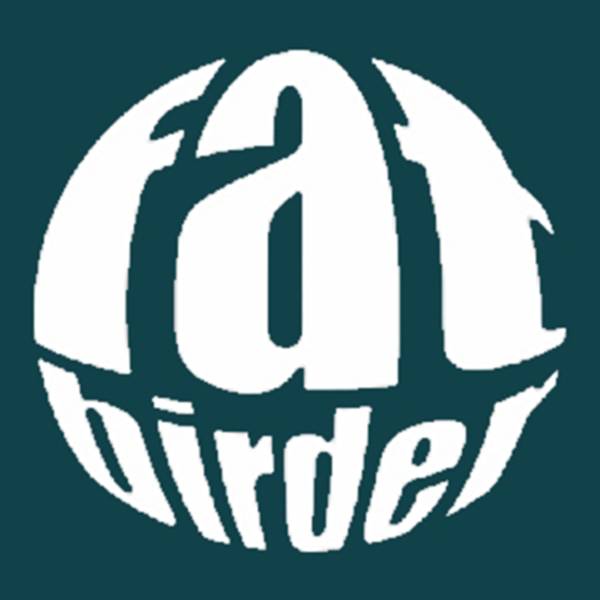Federal Republic of Somalia

Somalia is the easternmost country in continental Africa. The country is located in the Horn of Africa and is bordered by Ethiopia to the west, Djibouti to the northwest, Kenya to the southwest, the Gulf of Aden to the north, and the Indian Ocean to the east. Somalia has the longest coastline on Africa’s mainland and has an overall area of 637,657 km2. It is one of the least developed countries in the world with one of the lowest per capita incomes. The country has an estimated population of c.19 million people if one includes the c.8 million living in Somaliland which declared its independence from the rest of Somalia after a civil war more than three decades ago. Around 2.7 million live in the capital and largest city, Mogadishu. Around 85% of Somalia’s residents are ethnic Somalis; the official languages of the country are Somali and Arabic, though Somali is the primary language. Somalia has historic and religious ties to the Arab world, its people are Muslims, the majority of them Sunni. Currently, despite having a federal government the country is unstable with armed factions still holding some areas of the country.
Somalia’s terrain consists mainly of plateaus, plains and highlands. In the far north, the rugged east-west ranges of the Ogo Mountains lie at varying distances from the Gulf of Aden coast. It has several islands and archipelagos on its coast, including the Bajuni Islands and the ago: see islands of Somalia. The country is separated from Seychelles by the Somali Sea and is separated from Socotra by the Guardafui Channel. Strategically located at the mouth of the Bab el Mandeb gateway to the Red Sea and the Suez Canal, the country occupies the tip of a region that, due to its resemblance on the map to a rhinoceros’ horn, is commonly referred to as the Horn of Africa.

Daallo Mountain – © Musa CC BY-SA 4.0 via Wikimedia Commons
Hot conditions prevail year-round, along with periodic monsoon winds and irregular rainfall with recurring droughts. Mean daily maximum temperatures range from 30 °C to 40 °C, except at higher elevations and along the east coast. Mean daily minimums usually vary from about 15 °C to 30 °C. The southwest monsoon, a sea breeze, makes the period from about May to October the mildest season at Mogadishu. The December-February period of the northeast monsoon is also relatively mild, although prevailing climatic conditions in Mogadishu are rarely pleasant. The ‘tangambili’ periods that intervene between the two monsoons (October-November and March-May) are hot and humid.
Birding Somalia
Somalia contains seven terrestrial eco-regions: Ethiopian montane forests, Northern Zanzibar-Inhambane coastal forest mosaic, Somali Acacia-Commiphora bushlands and thickets, Ethiopian xeric grasslands and shrublands, Hobyo grasslands and shrub-lands, Somali montane xeric woodlands, and East African mangroves.
In the north, a scrub-covered, semi-desert plain referred as the Guban lies parallel to the Gulf of Aden littoral. With a width of twelve kilometres in the west to as little as two kilometres in the east, the plain is bisected by watercourses that are essentially beds of dry sand except during the rainy seasons. When the rains arrive, the Guban’s low bushes and grass clumps transform into lush vegetation. This coastal strip is part of the Ethiopian xeric grasslands and shrub-lands ecoregion.

Somali Acacia-Commiphora bushlands near Kismayo – ©SGT. G.D. ROBINSON, Public domain, via Wikimedia Commons
Cal Madow is a mountain range in the northeastern part of the country. Extending from several kilometres west of the city of Bosaso to the northwest of Erigavo, it features Somalia’s highest peak, Shimbiris, which sits at an elevation of about 7,927 feet. The rugged east-west ranges of the Karkaar Mountains also lie to the interior of the Gulf of Aden littoral. Much of this area lies in the self-proclaimed country of Somaliland. In the central regions, the country’s northern mountain ranges give way to shallow plateaus and typically dry watercourses that are referred to locally as the Ogo. The Ogo’s western plateau, in turn, gradually merges into the Haud, an important grazing area for livestock.
There are only two permanent rivers in the entire country, the Jubba and Shabele, both of which begin in the Ethiopian Highlands. These rivers mainly flow southwards, with the Jubba River entering the Indian Ocean at Kismayo. The Shabele River at one time apparently used to enter the sea near Merca, but now reaches a point just southwest of Mogadishu. After that, it consists of swamps and dry reaches before finally disappearing in the desert terrain east of Jilib, near the Jubba River.

Shebelle River – ©Elnino yare9 CC BY-SA 4.0 via Wikimedia Commons
Somalia is a semi-arid country with about 1.6% arable land. The first local environmental organisations were Ecoterra Somalia and the Somali Ecological Society, both of which helped promote awareness about ecological concerns and mobilised environmental programs in all governmental sectors as well as in civil society. From 1971 onward, a massive tree-planting campaign on a nationwide scale was introduced by the Siad Barre government to halt the advance of thousands of acres of wind-driven sand dunes that threatened to engulf towns, roads and farm land. 265 hectares of a projected 336 hectares had been treated, with 39 range reserve sites and 36 forestry plantation sites established. In 1986, the Wildlife Rescue, Research and Monitoring Centre was established by Ecoterra International, with the goal of sensitising the public to ecological issues. Later, Fatima Jibrell, a prominent Somali environmental activist, mounted a successful campaign to conserve old-growth forests of acacia trees in the northeastern part of Somalia. These trees, which can live for 500 years, were being cut down to make charcoal which was highly in demand in the Arabian Peninsula. As a way of addressing this problem, Jibrell and the Horn of Africa Relief and Development trained a group of teens to educate the public on the permanent damage that producing charcoal can create. Horn Relief coordinated a peace march in the northeastern Puntland region of Somalia to put an end to the so-called ‘charcoal wars’. As a result of Jibrell’s lobbying and education efforts, the Puntland government in 2000 prohibited the exportation of charcoal. The government has also since enforced the ban, which has reportedly led to an 80% drop in exports of the product.

Equus africanus somaliensis – ©C. Smeenk CC BY 3.0 via Wikimedia Commons
Somalia contains a variety of mammals due to its geographical and climatic diversity. Wildlife still occurring includes cheetah, lion, reticulated giraffe, baboon, serval, elephant, bushpig, gazelle, ibex, kudu, dik-dik, oribi, Somali wild ass, reedbuck and Grévy’s zebra, elephant shrew, rock hyrax, golden mole and antelope. It also has a large population of the dromedary camel. There are around 727 species of birds. Of these, ten are endemic, including the Somali Pigeon Columba oliviae, Lesser Hoopoe-Lark Alaemon hamertoni, Archer’s Lark Heteromirafra archeri, Ash’s Bushlark Mirafra ashi, Somali Bushlark, Mirafra somalica, Obbia Lark Spizocorys obbiensis, Somali (Golden-winged) Grosbeak Carduelis johannis and Warsangli Linnet Linaria johannis.
-
Wikipedia
GNU Free Documentation License
https://en.wikipedia.org/wiki/Somalia
-
Number of bird species: 685
(As at February 2025)
Number of endemics: 10
Somali Lark Mirafra somalica
-
Avibase
PDF ChecklistThis checklist includes all bird species found in Somali , based on the best information available at this time. It is based on a wide variety of sources that I collated over many years. I am pleased to offer these checklists as a service to birdwatchers. If you find any error, please do not hesitate to report them. -
E-Bird
PDF ChecklisteBird Field Checklist Somalia ebird.org/region/SO 532 species (+18 other taxa) - Year-round, All years Date: Start time: Duration: Distance: Party size: Notes: This checklist is generated with data from eBird (ebird.org), a global database of bird sightings from birders like you. If you enjoy this checklist, please consider contributing your sightings to eBird. It is 100% free to take part, and your observations will help support birders, researchers, and conservationists worldwide. -
Wikipedia
Annotated ListThis is a list of the bird species recorded in Somalia. The avifauna of Somalia include a total of 685 species, of which eight are endemic, and 3 have been introduced by humans.
-
Birds of Somalia
| By John Ash, John Miskell & Martin Woodcock | Bloomsbury | 2013 | Hardback | 336 pages, 4 plates with colour illustrations; b/w photos, 6 b/w illustrations, 654 b/w distribution maps, 3 colour & 1 b/w map | Out of Print | ISBN: 9781408190319 Buy this book from NHBS.com -
Birds of the Horn of Africa
| B Nigel Redman, Terry Stevenson & John Fanshawe | Chrisdtopher Helm | 2011 | Paperback | 512 pages, 213 colour plates, 1000+ colour distribution maps, colour & b/w maps | ISBN: 9781408157350 Buy this book from NHBS.com
-
African Bird Club
WebsiteWith a list of 660 or so species including a good number of endemics and near endemics, birds with wonderfully evocative names such as Bulo Burti Bush-Shrike Laniarius liberatus (see notes in the section on species) and Warsangli Linnet Carduelis johannis and an incredible selection of at least 24 lark species, this could be a birdwatcher
-
*List of protected areas of Somalia
InformationSatellite ViewInteractive list of national parks & wildlife reserveres etc. -
IBAs
WebsiteSatellite ViewThree endemic bird areas fall entirely within Somalia: the Central Somali coast; the North Somali mountains; the north-west Somalia secondary area. In addition, parts of the East African coastal forests, the Jubba and Shabeelle valleys and the Northern Ethiopia secondary area lie within Somalia -
NP Kismayo
InformationSatellite ViewKismayo National Park (KNP) is a national park in Kismayo, Somalia, also known as Haabar Waalid. During the drought previous government had built pawns or mini lakes to avoid migration, some says leapords and other predators and most impalas elephants never migrated do to availability of water all years,the only time most migrated is when country was in war itself. -
NP Lag Badana
InformationSatellite ViewThe Lag Badana area contains over 200 vascular plant species and is home to rare animals like lesser kudu. Of the plants, around 20 are endemic -
NR Alifuuto (aka Arbowerow)
WebpageSatellite ViewArbowerow Nature Reserve, also known as Alifuuto, is situated in central-southern Somalia on the lower reaches of the Shabeelle river, north of the town of Baraawe. The vegetation consists primarily of Acacia–Commiphora bushland and thicket, but the reserve contains significant areas of swamp and riverine habitat on the flood-plain of the Shabeelle, extending to a width of 25 km. -
NR Balcad
InformationSatellite ViewBalcad Nature Reserve is located on the eastern bank of the Shabeelle river, 35 km north of Muqdisho and immediately south of the town of Balcad. The site consists of one of the few patches of riverine forest remaining on the Shabeelle river and the surrounding scrub savanna. Some 200 bird species have been recorded from the site. The only known individual of Laniarius liberatus was released from captivity here. Of the Somali–Masai biome species, Turdus tephronotus, Uraeginthus cyanocephalus and Ploceus dichrocephalus have been recorded nationally from few other IBAs.
-
2012 [06 June] - Charles Davies
Report… This is an area of pink, rocky ground on low hills, with some Acacia scrub, including some funny disk-like Acacias growing flat on the ground. Our best sightings at this spot were a Somali Wheatear and a couple of Little Brown Bustard. Abdi was slightly worried about whether we would find the wheatear—his groups normally see many much further west towards the border with Djibouti and stop focusing on this species further east, but in the end we saw about 15 during the trip in rocky semi-desert areas from this site all the way east to Erigavo town….

